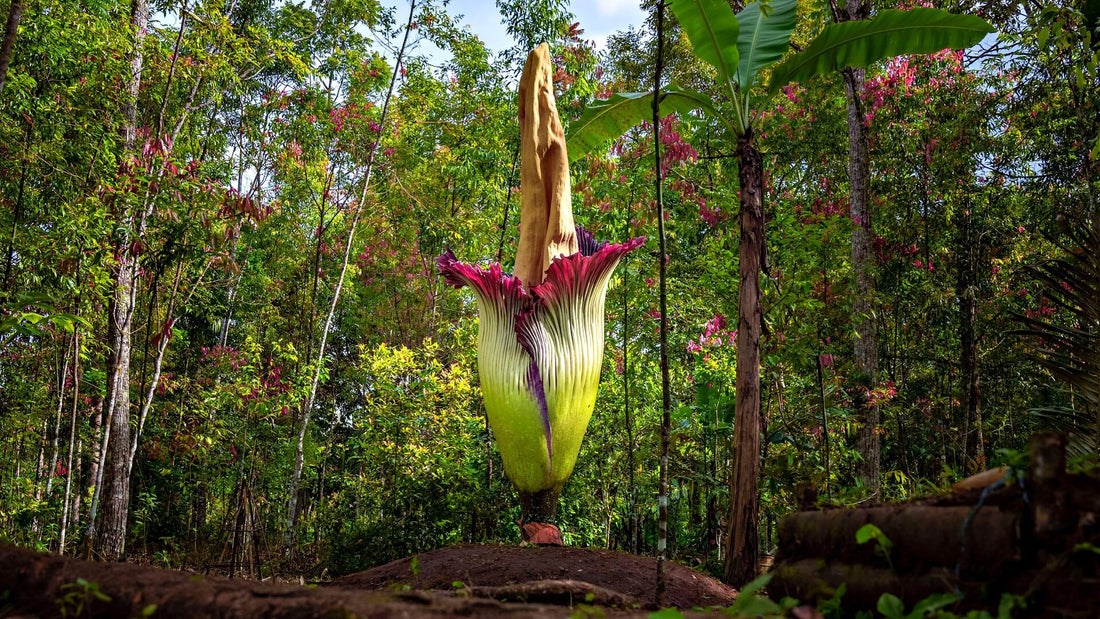
World's Most Expensive Trees
Share
Prized for their hidden assets, the trees with the highest values on the planet are not coveted for their beauty as an ornamental. They aren't collectible species and only grow in certain areas with a tropical climate. Due to the incredible amount of money one can make from a single one, they are also threatened with extinction.
Known as Mpingo in the Tanzanian dialect, the wood from an African Blackwood (Dalbergia melanoxylon) fetches $25,000 per cubic meter. That's roughly 10.7 square feet, which translates to a piece of trunk measuring about 2-feet by 5-feet. The wood is used to make the finest quality wind instruments, and highly prized by wood carvers.
Slow Growing Plants Are Very Expensive
Once indigenous to four countries, this very slow-growing types now only exists in Tanzania and Northern Mozambique. It takes 50-70 years to mature, and without sustainable forestry being practiced in Ethiopia and Kenya, they no longer have this precious commodity. Things are changing in Tanzania, where collecting seed from the remaining types and replanting practices have begun but are not enough to meet the demand.

Used for a variety of purposes in the Eastern world, the aromatic oil of the Agarwood type (Aquillaria malaccensis) is the highest-priced aphrodisiac and essential oil you can buy. Possessing top-quality oud from them in the wild in great quantities would make you very wealthy instantly, as it is pricier than gold. A pound of gold in the United States currently has a value of just under $20,800. A pound of oud oil commands $25,000 on the market.
The heartwood is also valuable in India, Pakistan and Asia as incense. This brings the value of an Aquillaria type up sharply with the price that its wood chips and powder commands. In China, a sapling could bring upwards of $600, and a carving from the heartwood about 2-feet in length is worth about $125,000.
Is 600 Million Expensive?
Oud oil has many waiting markets. It is used for healing, perfumes and is highly sought after during religious holidays like Ramadan and Eid. Oud incense is in use in homes and temples throughout this part of the world. The Saudis spend 600 million on oud just for Ramadan.
Treasured for thousands of years, legal and illegal over harvesting has made the wild Agarwood type a rarity indeed. In recent years, plantations are springing up across this part of the world, and while the oil and wood harvested from a cultivated sapling is still highly valuable, its quality and market value is lower than that from a wild type.
Here Are Some Of The Most Rare But Not Expensive Plants We Offer

Here are some of the most sought after specialty plants us at TN Nursery Offers that you can add to your property. Before making your purchase(s), always guarantee you have the necessary light, soil, and water conditions. Also, be certain you can properly care for the plants that you're considering.
Deer Fern
Possibly prevent mosquitoes with this beautiful ground cover. Place this plant in any space that doesn't get direct sunlight throughout the day. It can thrive in both parched and moist conditions, but deer fern works best in moist spaces.
This plant provides you with lovely blooms that can arrive in various colors. In addition to counting colors in your yard, echinacea also can be used for various health benefits. Plus, butterflies love this plant. Too much watering can harm it, and the plant needs at least four hours of sunlight every day.
Spotted Touch Me Not
You should enjoy their yellow blooms that feature specks of orange found throughout each flower. The appearance of hummingbirds, too, could provide you with plenty of reasons to smile. Place this plant in shady areas that stay moist.
Sumac Tree
If you're looking for a bordering tree for your home or place of business, you might enjoy this plant. It only grows on average between three and eight feet high. However, this plant expands up to 15 feet in width. They also yield rich red blooms.
If you're looking for an edible addition for your yard, you might want to consider this plant. Use the fruit from this plant in jams, jellies, and when making wine. Plant this shrub in high light or partial light areas. It's a great option if you're looking for a border plant.
The gold or yellow blooms from this wildflower will light up any yard. Plus, this plant attracts bees and butterflies. They work best in sunny areas, and this plant typically grows three to eight feet high and one and a half to three feet wide.
